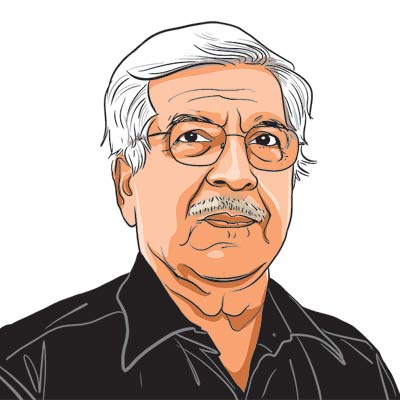Opinion On poverty,figure it out
Only the foolhardy would uncritically accept official estimates.
Only the foolhardy would uncritically accept official estimates
My friend and fellow columnist Surjit Bhallas pieces are almost always provocative. Although his recent piece on poverty in India and China (China-India Poverty: a matter of record,IE,August 7) hit the bulls eye,I disagreed with his earlier piece on poverty (Poverty of thought,IE,August 3),where he took on N.C. Saxena for saying that the poverty line was fixed in 1973-74,and has remained unchanged after adjusting for inflation. Bhalla dismissed this as a conceptual (and ideological) error. But Suresh Tendulkar was a very careful economist. He might not have made the same assumption of ideological error. The Tendulkar committee moved from a calorie-based poverty line to a food expenditure-based line. But he was also happy with the earlier urban poverty ratio of 25.7 per cent for 1973-74,established by the 1977 task force (which I headed) and periodically adjusted for inflation. In fact,Tendulkar laid down that this estimate should set the national poverty line the expenditure required to meet its calorific goal should be the poverty line for both rural and urban areas. The exercise was fascinating,both for policy and in theory. The 1977 task force cast its shadow on the more recent exercise,possibly because Tendulkar had been one of its members. Bhalla needs to carefully peruse the Tendulkar Report before castigating Saxena.
But Bhallas well-researched piece on poverty in India and China makes some accurate observations. An important point he makes is that,in India,there is a big difference between private consumption as estimated by the National Sample Survey (NSS) and as reflected in national accounts data. The latter is derived from the production or commodity flow side,adjusted for stocks,government purchases,net imports and the use of commodities by industry. Moni Mukherjee,from the Indian Statistical Institute,said many decades ago that there are two estimates. Unfortunately,there is no way of saying which is better. Neither of the two has enough information to work out errors,never mind compare them. Of course,this does not stop some brave souls from championing one estimate or the other,depending on whether they are advising the treasury benches or sitting in the opposition. But Bhalla is above such chicanery. He works out that the difference between the two estimates has increased in recent years,a point he had also made almost a decade ago.
The problem,as Bhalla points out,arises when you make comparisons between countries. He shows that from 1999 to 2011,the NSS sets annual consumption growth in India at 2.8 per cent. But from the commodity flow side,we get an estimate of 4.8 per cent annually from the national accounts. That is a large difference. In China,Bhalla observes,it was the other way around the growth rate from the budget survey,based on which poverty is measured,was higher than the rate derived from commodity flow. The former was 6.7 per cent and the latter 7.3 per cent. Bhalla argues that if this is corrected,poverty and inequality reduction in India would compares favourably with China.
I have an interesting personal experience on the use of surveys for policy figures in China. In 1982,I was deputy leader of the first Indian delegation to China after a long period of frosty relations. The Chinese Academy of Social Sciences (CASS) had been established only a few years earlier and scholars were being very careful. But when I went back in the last decade,heading a Rajiv Gandhi Foundation delegation,I was impressed by the frank discussion of problems and the expression of alternative views. Jianjin Liu of the Institute of Rural Development Research of CASS was an acknowledged expert on Chinas non-farm economy and,like his Indian counterparts,a sceptic of the statistics of achievement offered up by ministries. He worked patiently on the agricultural census,establishing that Chinas non-farm employment,which had been lower than 20 per cent two decades earlier,stood at 25.5 per cent in 2001 and at 27.5 per cent in 2002,figures much lower than official achievement statistics would suggest. Some years later,I was horrified to read in the papers that he had been imprisoned for 20 years on undisclosed charges of espionage. Fortunately,more recent reports suggest that criticism is less unacceptable now. And as Bhalla asserts,only the foolhardy would uncritically accept official statistics.
The writer is chancellor,Central University of Gujarat
express@expressindia.com





